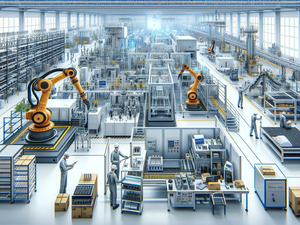 ET Online
ET OnlineBack in 2006-7, infrastructure was the darling of the stock market. Everyone was sold on India’s imminent infrastructure boom. Order books were growing and businesses were borrowing heavily to expand capacity. Investors, caught up in the hype, were flocking to any fund with the ‘infra’ tag, and AMCs were eager to oblige. Six of these funds were launched in 2007, with another three funds arriving in early 2008.
The initial hype fizzled out spectacularly, leaving many investors with poor returns. By March 2013, nearly all infra funds were bleeding and remained chronic underperformers until 2022. From 31 May 2007 to 31 May 2022, infra funds delivered a paltry annualised return of 8.3%, equivalent to the Public Provident Fund (PPF) returns for the same period. In contrast, the average flexi-cap fund returned 11.7% and the best infra fund only managed 11%. Infra funds’ return profile has improved only in the past two years, averaging 12% since 2007. In comparison, flexi-cap funds have averaged 13%. The returns clearly did not justify the hype around infra stocks.
Will manufacturing go the way of infrastructure? The central narrative sounds familiar—a country on the brink of unshackling its ambitions. The government has recently pushed to revitalise manufacturing through initiatives like Make in India and PM Gati Shakti. Its ‘Aatmanirbhar Bharat’ plan promotes local goods over costly imports, and ambitious PLI schemes offer incentives for manufacturing in areas like electronics, bulk drugs, pharmaceuticals, telecom hardware, and food processing. Additionally, India aims to capitalise on the ‘China+1’ strategy, attracting global firms seeking alternative suppliers.
Analysts believe that with clear intent and an enabling environment, manufacturing presents a multi-decade investment opportunity. “There is strong government support for self-reliance through ‘Aatmanirbhar Bharat’. These reforms, coupled with the supportive macro environment, are leading to high utilisation of existing capex, as well as an increase in overall capex,” remarks Gautam Kalia, Head Super Investor, Sharekhan by BNP Paribas. “Along with a growing working-age population and rising domestic demand, these factors position manufacturing as a major growth theme for India over the next decade,” asserts Lalit Kumar, Fund Manager, ICICI Prudential Manufacturing Fund.
Recently launched funds

The initial signs are encouraging. Apple plans to build over 50 million iPhones in India in the next 2-3 years. Foxconn, one of its key suppliers, announced a $1.5 billion investment in India. Tata Group is planning an iPhone assembly plant in Tamil Nadu, with its Karnataka plant already operational. Google will make Pixel 8 phones in India with Dixon Technologies. Micron became the first major global semiconductor company to put up a base in India. AMD inaugurated its largest global design centre in Bengaluru as part of a $400 million investment.
India’s manufacturing sector is gaining momentum, reflected in economic activity. In March, the HSBC India Manufacturing PMI index reached a 16-year high of 59.1, indicating strong expansion. In 2023-24, India achieved record merchandise exports of $778 billion, according to the Commerce Ministry data.
Older funds are faring well
Increased manufacturing activity has boosted returns.

Analysts are confident that India’s manufacturing sector has stronger foundation than its past infrastructure ambitions. Arihant Bardia, CIO of Valtrust Capital, notes that the infrastructure sector in the 2006-8 period was burdened by unhealthy leverage, red tapism and corruption. It was also cyclical and had long gestation periods, with delayed returns. These issues do not affect manufacturing companies today.
The manufacturing theme is more diversified, covering a mix of consumptiondriven and old-economy businesses. The Nifty India Manufacturing Total Return Index (TRI), the benchmark for these funds, includes auto and auto components (31%), capital goods (21%), and healthcare (14%). “Manufacturing covers nearly 37% of the overall market cap and is well diversified across sectors,” observes Kalia. Comparatively, infra funds played within narrower confines, which elevated their risk profile.
A dose of reality
Despite recent wins, investors should be cautious about betting on domestic manufacturing. Progress varies by sector, and the government’s PLI schemes have fallen short in textiles, IT hardware, specialty steel, medical devices, white goods, and auto components. While overall investment exceeded expectations last fiscal year, production was uneven across sectors.
A decade after the launch of ‘Make in India’, the manufacturing sector contributes only 15% to the GDP, well below the targeted 25% by 2022. India still lags as a contender to replace China as the global manufacturing hub. While China’s global FDI share decreased by 9.3 percentage points from 2019 to 2023, India hasn’t seen a proportional increase. Other countries like Vietnam, Mexico, Brazil and the USA are attracting the majority of FDI flows. A report by Kotak Institutional Equities highlights India’s failure to attract significant FDI, with net FDI plummeting by 62% to $10.6 billion in 2023-24, according to the RBI.
Infra funds failed to justify initial hype
These funds have consistently underperformed, resulting in sub-par returns.

“There is growing concern that mutual funds may be over-emphasising the manufacturing sector, much like the infrastructure sector was in 2006-7, which eventually disappointed many investors. The sustainability of the manufacturing boom remains uncertain,” contends Feroze Azeez, Deputy CEO, Anand Rathi Wealth. Valuations are crucial, and while the current manufacturing buzz isn’t as feverish as the infrastructure boom of years past, stocks are trading at a significant premium. This has made some analysts cautious. Quantum Advisors India finds the current valuations less encouraging. “As the opportunity broadens, we should expect to see more options. However, it would pay to have realistic expectations. Japan, South Korea and China grew in double digits for close to two decades. We do not expect that in India,” the asset manager observes in a note.
Should you take the bait?
Manufacturing funds present a compelling theme supported by various factors. Unlike past infrastructure promises relying on distant profits, manufacturing is grounded in more immediate potential. However, it remains an idea with uncertainties. This renders targeted investments in the theme risky. “Investors should be cautious about making focused bets on any specific sector, including manufacturing,” warns Azeez.
Anish Teli, Founder, QED Capital Advisors, cautions, “A spurt of NFOs specific to a theme is usually when that idea has already been discovered and future growth is priced in.”
Bardia insists that the manufacturing theme is no fad, yet does not find merit in taking a dedicated bet on it. “Existing flexi-cap funds already provide exposure to the manufacturing sector. With additional presence of banking and financial services companies, which are currently valued attractively, these funds provide better comfort.” He only suggests taking dedicated exposure to manufacturing to those with higher risk appetite.
India’s journey to becoming a manufacturing hub will be a long climb. Investors should not expect big payoffs within a few years. As Quantum Advisors puts it, “Investors need themes and stories to invest. However, investing in the hype of a theme without being realistic about expectations can lead to bad allocation decisions.”
(Catch all the Personal Finance News, Breaking News, Budget 2024 Events and Latest News Updates on The Economic Times.)
Subscribe to The Economic Times Prime and read the ET ePaper online.
(Catch all the Personal Finance News, Breaking News, Budget 2024 Events and Latest News Updates on The Economic Times.)
Subscribe to The Economic Times Prime and read the ET ePaper online.









 Get Unlimited Access to The Economic Times
Get Unlimited Access to The Economic Times
